Previous posts in the New Narrows Bridge Series:
- The Two Towers I: Introduction
- The Two Towers II: History of the Narrows Bridges
- The Two Towers III: The Caissons
- The Two Towers IV: Anchor Management Class
- The Two Towers V: The Tour Begins
- The Two Towers VI: Struttin’ My Stuff
- The Two Towers VII: To the Top
- The Two Towers VIII: Stairway to Heaven
- The Two Towers IX: Spinning Beginning
- The Two Towers X: Wheels Over Water
- The Two Towers XII: Compacting the Cables
- The Two Towers XIII: Banding the Cables
- The Two Towers XIV: The Bridge Deck Cranes
- The Two Towers XV: Life on the Bridge
- The Two Towers XVI: Heavy Lifting
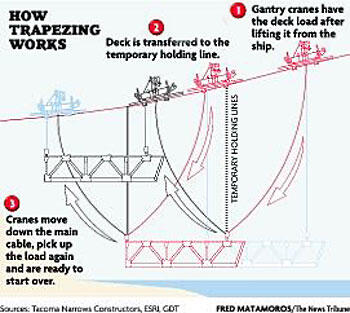
Since the last segment a great deal of progress has taken place — and now the bridge is due to open within a few days.
In the last post, we covered the construction cranes and their daunting task of lifting bridge sections — 400 to 700 tons each — from their transport ship or barges on the water. The cranes, as you may recall, use the cables themselves as runners, and can move along the cables — albeit very slowly — by lifting and hopping forward. They are easily capable of lifting well over the weight of one bridge section, but there’s one rather large caveat: they cannot move along the cables under a load.
As a substantial portion of the bridge deck lies over land, or other areas not directly over water (between the tower legs, for example), this poses, shall we say, a bit of a dilemma. The sections are far too heavy for freestanding cranes, and the steep banks make any sort of land transport impossible.
But the answer will come with the greatest of ease: the daring bridge deck on the flying trapeze.
Really.
The genius of engineers never ceases to amaze me.
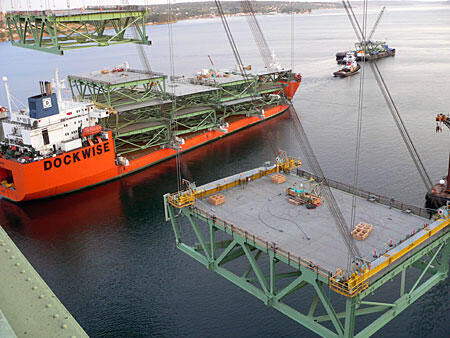
The process involves placing addition temporary cable bands along sections of the suspension cable inaccessible from the water. Sturdy steel cables — called holding lines — are dropped from the these cable bands, initially left hanging in the breeze. The bridge section to be “trapezed” is then lifted straight upwards by the gantries from its barge or ship until it lies slightly above the projected deck level. From the catwalks, the temporary suspension wires are swung toward the new section — in the direction you wish the deck section to move — and attached. So if you are moving the section toward the west moorage, holding lines from cable bands which are west of the new section are attached to the west end of that section.

The lift cranes then slowly add slack to their lines, allowing the deck section to drop slightly, transferring its weight to the temporary holding lines — which swing the deck section forward in the direction you desire.
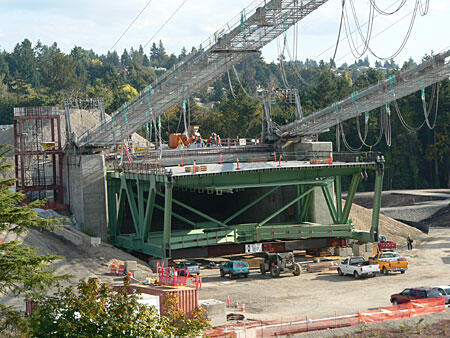
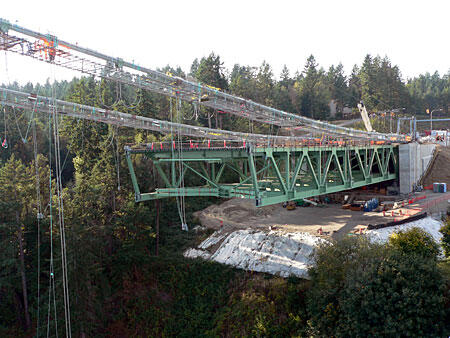
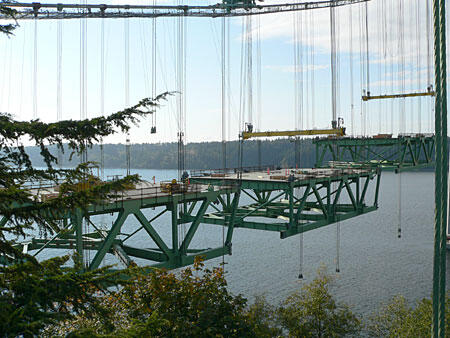
And I do mean slooowly: slower than a Florida election recount with hanging chads. Each move may take one of more days to complete. And it gets even slower near the anchors, where the holding lines by necessity get shorter.
The highest form of trapeze art is seen when positioning the sections which lie between the legs of the two towers. The tower legs have been designed to straddle the deck section rather precisely.

How precisely? Well, how about 5/8 inch clearance between the outside of the section and the inside of the tower legs. Less than a deck of cards on each side. This is parallel parking at its finest.
The process, however, is fundamentally the same. A third gantry crane is brought into play to provide additional control. The sections between the tower legs have brass bearings which must align with bearing plates on the towers, to provide weight support while allowing horizontal movement as the deck expands and contracts with changes in weather or load distribution.
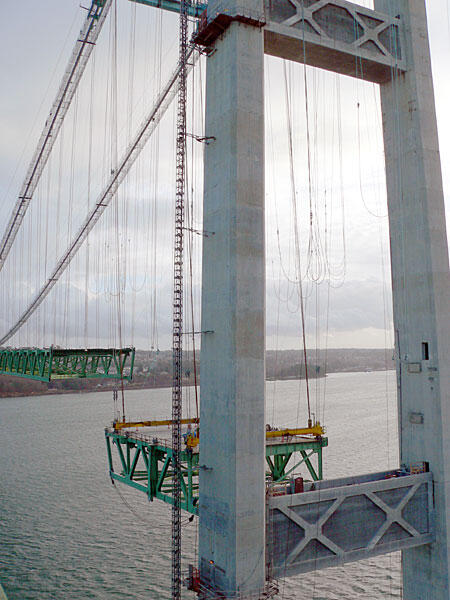
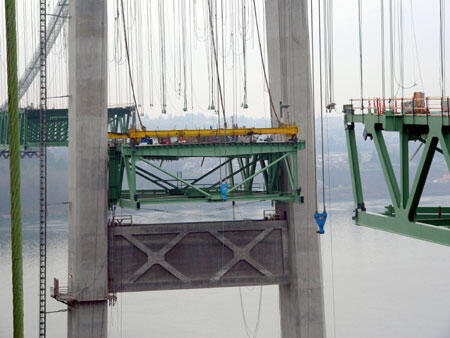
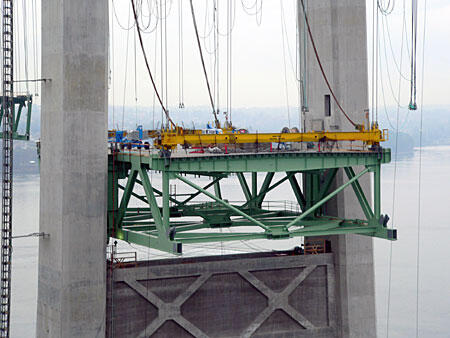
Well, that’s it on this edition. Next time ’round we’ll see how they squeeze the last deck sections in.